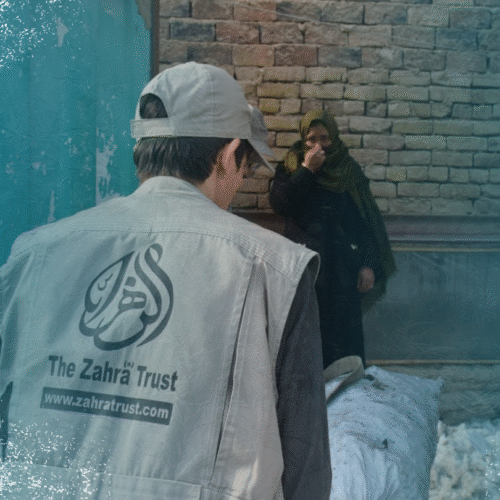Imam Ali al-Hadi (as), also known as Al-Naqi and Al-Hadi, was the 10th Imam in Shia Islam. Born in Madina in 212 AH (or 214 AH according to some narrations), he was the son of Imam Muhammad al-Jawad (as) and the father of Imam Hassan al-Askari (as). His imamate lasted for nearly 34 years under Abbasid rule.
Imam Ali Al-Hadi (as) lived in a time of change and oppression – yet he rose above it with wisdom, patience, and generosity that still guide us today.
Imam Ali Ali-Hadi (as) is the 10th Imam in Shia Islam. His life, though marked by intense surveillance and restrictions under Abbasid rule, showed the power of spiritual leadership that overcame physical limitations.
Through his wisdom, patience, and subtle but powerful resistance, the Imam (as) protected the tenets of Islam and nurtured the hearts of the believers.
As we celebrate his wiladat, we reflect on key moments from his life to draw inspiration and strive to walk in his footsteps as true followers.
Who was Imam Ali Al-Hadi?
Imam Ali Al-Hadi is the 10th Shia Imam. He was known for his piety, wisdom, and generosity.
Born in the holy city of Madina, the Imam blessed this world on the 15th of Dhul Hijjah, according to most narrations. Other narrations mention he was born on the 2nd of Rajab. Most narrations say he was born in 212 AH, while some say 214 AH.
His father was our 9th Imam, Muhammad Al-Jawad (as), and his mother was Lady Summana. He is the father of the 11th Imam, Hassan Al-Askari (as), and the grandfather of our Awaited Saviour, Imam Mahdi (ajtfs).
He became the Imam in 220 AH, and his imamate lasted for almost 34 years. The proof of his Imamate is shown from a hadith attributed to Imam Al-Jawad (as), which says,
“Certainly the Imam after me is my son Ali. His command is my command, his word is my word, obedience to him is obedience to me, and the Imamate after him will rest with his son al-Hassan.” (Bihar al-Anwar, v.50)
Al-Hadi, the Guide
One of the titles of the Imam was “Al-Hadi”, which means “the Guide.”
He had this title because he remained persistent in guiding the Muslims on the correct path of Islam, despite being under heavy surveillance from the Abbasid caliphs like Mutawakkil. This was done in both Madina and Samarra.
Shaykh Baqir al-Qarashi mentioned an example of Imam Al-Hadi (as) guiding someone. A man named al-Hasan al-Basri was a Waqifi Shia. When Imam Al-Hadi (as) met him, he said, “Until when is this slumber? Is it not yet time for you to awake?” (i.e. awaken from being away from the truth). The man was so affected by these words that he came back to the correct path.
Al-Naqi, the Pure
Another title of the Imam (as) was “Al-Naqi”, meaning “the Pure”. The Imam (as) was given this title because of the cleanliness of his heart.
This quality of the Imam (as) can be seen through his connection with Allah (swt) and his detachment from the material world. His homes in Madina and Samarra had no furniture. He was an ascetic and preferred the obedience to Allah (swt) over any worldly pleasure.
Imam Al-Hadi (as) is reported to have said, “He who obeys The Creator (swt) is not bothered by the displeasure of the creation (i.e. other people). (Bihar al-Anwar, v.78)
From Madina to Samarra
Under Mutawakkil’s rule, Imam Al-Hadi (as) remained under constant surveillance. With the Imam (as) being popular and guiding people in Medina, the governor of Medina informed Mutawakil of the potential danger to the state due to the Imam’s (as) popularity and asked to have the Imam (as) arrested.
Under the guise of respect, Mutawakkil summoned Imam Al-Naqi (as) to Samarra. While the Imam (as) initially rejected, Mutawakkil persisted and subtly forced the Imam (as) to move. Imam Al-Hadi (as) first went to Baghdad before arriving in Samarra.
Mutawakkil made the Imam (as) stay at Khan as-Sa’alik when he first arrived to Samarra as way to try and embarrass him. After the Imam (as) moved into his home, Mutawakkil had placed the Imam under house arrest and continued to keep him under surveillance. This remained through the Imam’s (as) time in Samarra and as different Abbasid caliphs took reign.
His Martyrdom and Burial
Imam Al-Naqi (as) was poisoned by al-Mutaz and achieved martyrdom on the 3rd of Rajab, 254 AH. He is buried in Samarra with his son, Imam Hassan Al-Askari (as).
The shrine faced terrorist attacks in February 2006 and June 2007, where explosives destroyed the dome and minarets of the holy shrine. The shrine has since been rebuilt and the security tightened up.
The life of Imam Ali Al-Hadi (as) reminds us that true leadership lies in humility, piety, and wisdom. Let us strive to reflect his example in our actions and commitments.
- 📖 Learn more about his life in books like “The Life of Imam Ali al-Hadi, Study and Analysis” by Shaykh Baqir Shareef al-Qarashi and “The Fourteen Luminaries of Islam” by Ahmad Ahmadi Birjandi.
FAQs
He is called Al-Hadi (“The Guide”) for his relentless efforts to spiritually guide the Muslim community despite heavy surveillance. He is also known as Al-Naqi (“The Pure”) due to his ascetic lifestyle, sincere worship, and detachment from worldly pleasures.
The Imam faced continuous political pressure and surveillance from the Abbasid caliphs, especially al-Mutawakkil. He was forcibly relocated from Madina to Samarra and placed under house arrest. Despite this, he continued guiding the ummah through wisdom, piety, and quiet resistance.
Imam al-Hadi (as) was martyred by poisoning under the rule of Caliph al-Mu’taz in 254 AH. He is buried in Samarra, Iraq, alongside his son, Imam Hassan al-Askari (as). Their shrine was tragically bombed in 2006 and 2007 but has since been rebuilt.
Imam al-Hadi (as) exemplifies spiritual leadership, humility, and endurance. His silent yet strong resistance teaches us that true strength lies in piety, patience, and guidance. His life is a beacon for those facing oppression and hardship in modern times.
You can honour his legacy by:
- Learning about his life through books and lectures.
- Giving sadaqa or charity in his name.
- Supporting causes that uplift the oppressed.
- Practicing humility, prayer, and patience in your own life.






